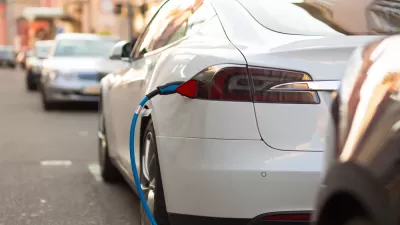This in-depth look at the future of energy shows a coming crisis, with the oil shortage taking center stage due to India and China's thirst for cars. The U.S. sets a poor example for them to follow with low fuel taxes and long commutes.
"The planet's population is expected to grow by 50 percent to nine billion by sometime in the middle of the century.
The number of cars and trucks is projected to double in 30 years- to more than two billion - as developing nations rapidly modernize.
Oil now accounts for just 19 percent of China's energy needs. But China's oil demand is expected to more than double by 2030 to over 16 million barrels a day, according to the International Energy Agency, as more people rise from poverty.
Just as in the United States, much of the increase in China's oil demand has come from that country's love affair with cars. The number of vehicles in China rose sevenfold between 1990 and 2006, to 37 million.
William Chandler, an energy expert at the Carnegie Endowment for International Peace, estimates that if the Chinese were using energy like Americans, global energy use would double overnight and five more Saudi Arabias would be needed just to meet oil demand.
"What about the United States? The country has shown little willingness to address its energy needs in a rational way.
The United States is the only major industrialized nation to see its oil consumption surge since the oil shocks of the 1970s and 1980s. This can partly be explained by the fact that the United States has some of the lowest gasoline prices in the world, the least fuel-efficient cars on the roads, the lowest energy taxes, and the longest daily commutes of any industrialized nation. The result: about a quarter of the world's oil goes to the United States every day, and of that, more than half goes to its cars and trucks."
Thanks to Mark Boshnack
FULL STORY: Barreling Along: The Big Thirst

Alabama: Trump Terminates Settlements for Black Communities Harmed By Raw Sewage
Trump deemed the landmark civil rights agreement “illegal DEI and environmental justice policy.”

Planetizen Federal Action Tracker
A weekly monitor of how Trump’s orders and actions are impacting planners and planning in America.

The 120 Year Old Tiny Home Villages That Sheltered San Francisco’s Earthquake Refugees
More than a century ago, San Francisco mobilized to house thousands of residents displaced by the 1906 earthquake. Could their strategy offer a model for the present?

Opinion: California’s SB 79 Would Improve Housing Affordability and Transit Access
A proposed bill would legalize transit-oriented development statewide.

Record Temperatures Prompt Push for Environmental Justice Bills
Nevada legislators are proposing laws that would mandate heat mitigation measures to protect residents from the impacts of extreme heat.

Downtown Pittsburgh Set to Gain 1,300 New Housing Units
Pittsburgh’s office buildings, many of which date back to the early 20th century, are prime candidates for conversion to housing.
Urban Design for Planners 1: Software Tools
This six-course series explores essential urban design concepts using open source software and equips planners with the tools they need to participate fully in the urban design process.
Planning for Universal Design
Learn the tools for implementing Universal Design in planning regulations.
Clanton & Associates, Inc.
Jessamine County Fiscal Court
Institute for Housing and Urban Development Studies (IHS)
City of Grandview
Harvard GSD Executive Education
Toledo-Lucas County Plan Commissions
Salt Lake City
NYU Wagner Graduate School of Public Service




























